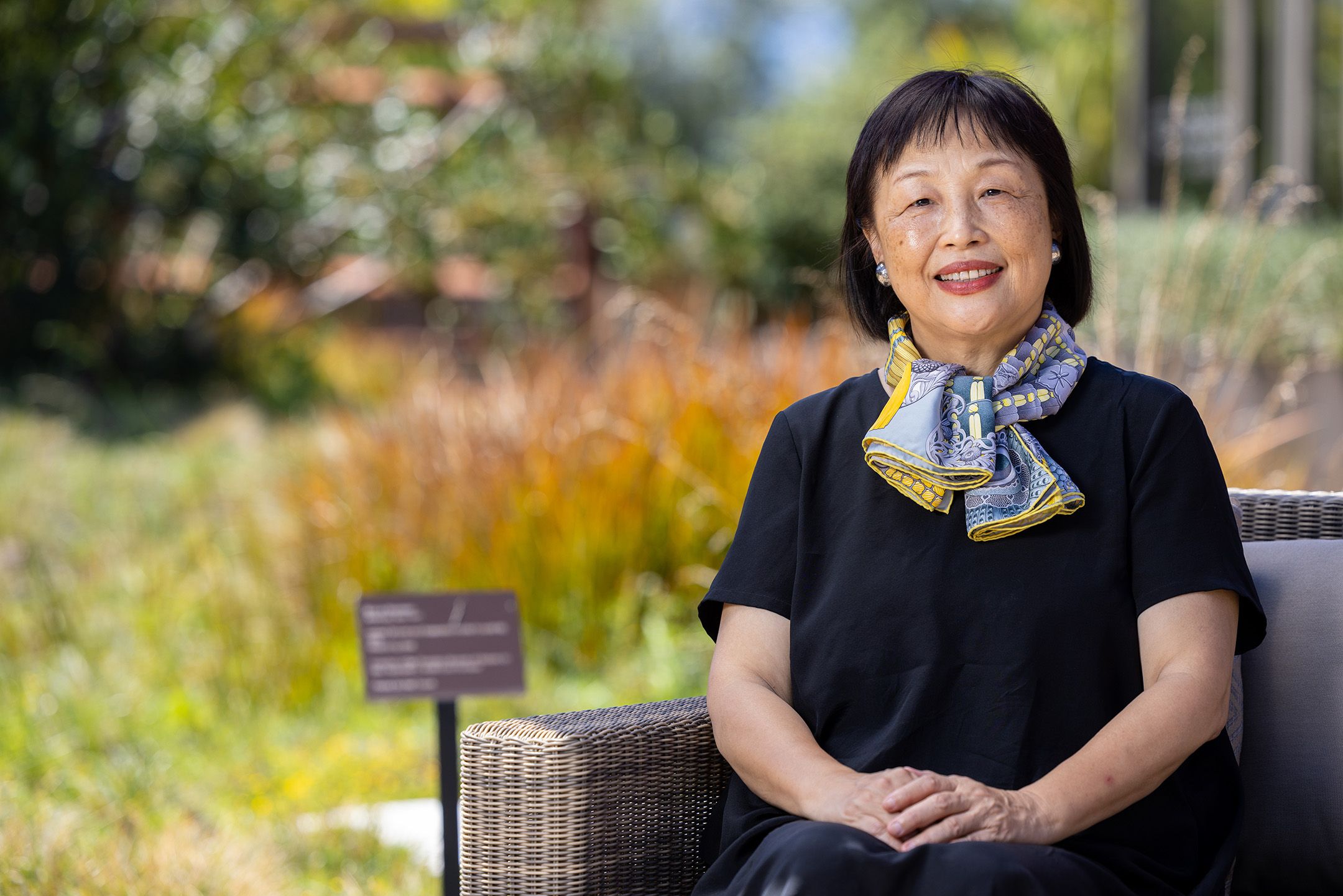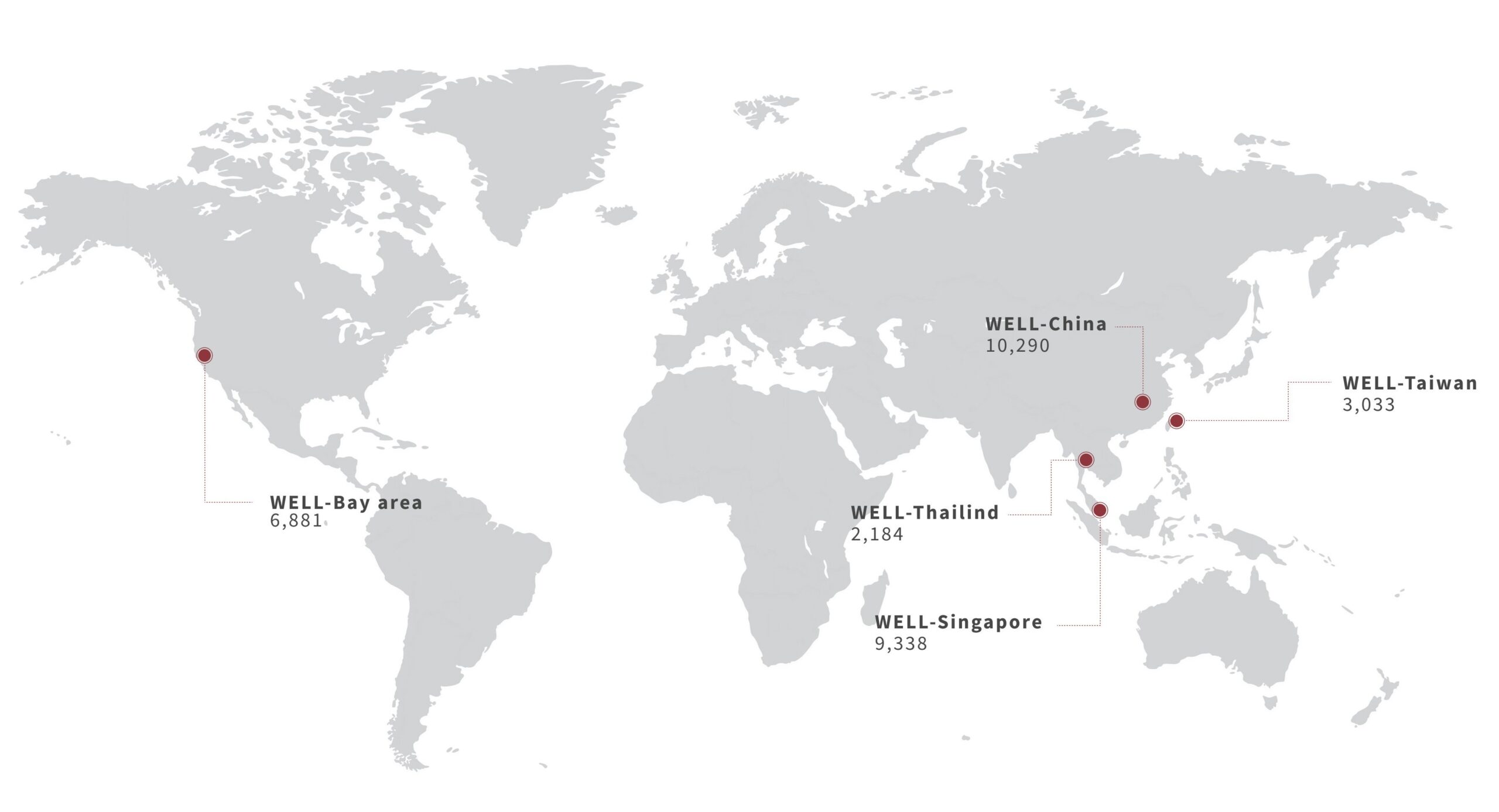Building the Science of WELL-being on a Global Scale
Ann Hsing’s Journey to Ensure Improved Physical, Mental, and Spiritual Health

Building the Science of WELL-being on a Global Scale
Ann Hsing’s Journey to Ensure Improved Physical, Mental, and Spiritual Health
During the darkest, dreariest days of the COVID-19 pandemic, humans worldwide became more aware of and interested in their personal well-being. Since 2020, the wellness market has grown twice as quickly as the international economy, with global spending having now reached $4.5 trillion.
In 2015, faculty in the Stanford Prevention Research Center (SPRC), already deeply interested in well-being, launched a longitudinal, five-country Stanford WELL for Life study, now commonly known as “WELL.” The study, now on the brink of publishing breakthrough research findings, uses novel methods to measure and understand multiple dimensions of well-being across cultures. Since its inception, WELL’s multidisciplinary team of experts has been building the science by studying over 31,000 participants from the U.S., China, Taiwan, Singapore, and Thailand.
“WELL’s unique value is its quest for science-driven answers about well-being in diverse populations and its commitment to engaging and improving well-being in communities through science-based intervention and implementation,” says Ann Hsing, PhD, professor of medicine and principal investigator of WELL. She notes that SPRC defines it as “a holistic synthesis of a person’s biological, psychological, and spiritual experiences, resulting from interplay between individuals and their social, economic, and physical environments, that promote living a fulfilling life.”
“This extends beyond physical health and the absence of disease,” Hsing says. “Everyone wants to live a fulfilling life. With scientifically valid information and practical tips, we believe that it is possible to empower individuals to improve their own well-being and that of their communities. With the help of our international team, Stanford WELL for Life is building the science and learning how to improve well-being in people around the world.”

with translation of science and implementation of interventions that may help lower the cancer burden in individuals and their communities,” she says.
After coming to Stanford, Hsing took on community engagement and leveraged opportunities to educate the public about cancer prevention through presentations at local churches and community centers about cancer epidemiology, risk factors, and early detection of cancer.
Through those engagements, Hsing realized that even great scientific discoveries will have little or no impact if the public does not understand what they mean.
“I learned how important it is for us scientists to share our knowledge with the community in a way that resonates with them. WELL is a perfect example of why implementation and meaningful engagement matter. Our goal is not only to conduct research, but also to ensure that knowledge generated by WELL benefits everyone worldwide. Well-being is multidimensional, encompassing physical, mental, and spiritual health — body, mind, and soul,” Hsing says.
“I realized that the concept and practice needed to be communicated in a simple and effective way to the general public to empower them and to make everyone a little bit better, thereby making our world a bit better. All of us want to live a satisfying life, so the potential impact of our research is enormous. This is why I took on the challenge of serving as WELL’s principal investigator,” she adds.
Well-being is multidimensional, encompassing physical, mental, and spiritual health — body, mind, and soul.
– Ann Hsing, PhD
Well-being is multidimensional, encompassing physical, mental, and spiritual health — body, mind, and soul.
– Ann Hsing, PhD
Breakthrough Research
To facilitate and enhance their research, WELL investigators developed a scale that uses quantitative scores to measure and assess participants’ well-being in seven domains: sense of self, positive emotions, social connectedness, resilience, negative emotions and experiences, purpose and personal growth, and physical health.
In 2021, WELL researchers investigated the impacts of the COVID-19 pandemic, climate change, eco-anxiety, access to nature, and air pollution on well-being. Recent and planned publications show how the promise of WELL data may lead to better health and satisfaction with life.
In one paper, using data from WELL Singapore, researchers showed that use of parks and physical activity in a park were associated with higher well-being scores in an urban setting.
“These data suggest that even in urban settings, connecting with nature and spending time in accessible parks can help improve well-being because spending time in parks is often related to increased physical activity,” says Hsing. She also points to data showing that physical activity helps with stress management and was associated with better well-being during the pandemic.
“These results suggest that nature and physical activity, either alone or with others, can be used to develop effective strategies for the cultivation and promotion of well-being,” she says.
WELL researchers expect to publish an array of papers in 2023 that will include key findings from a collaboration with the Ford Motor Company and from a 1,200-person cohort of WELL participants studied during the COVID-19 pandemic.
The collaboration with Ford led to a 2022 pilot study using wearable technology to assess the effects of daily stress, mobility, physical activity, and sleep quality. The study measured heart rate variability in 120 participants wearing biosensing wristbands around the clock for 60 days. These repeated measurements led researchers to see a correlation between being stressed and having a low well-being score. Hsing notes that these data provide good insights for future interventions.
Within the COVID-19 cohort, WELL established baseline data on day one of shelter-in-place for each of 1,200 participants and followed up with them after 10 days and then at one-, three-, six-, and 12-month intervals.
“We found that early in the pandemic, negative emotions increased, and well-being scores dipped,” Hsing says. “However, over time, the decrease in scores leveled off, suggesting that people are adaptable and resilient.”

Seven Domains of Well-being
In WELL, well-being is composed of seven domains: sense of self, positive emotions, social connectedness, resilience, negative emotions and experiences, purpose and personal growth, and physical health.
Another study also showed that during the pandemic’s shelter-in-place restrictions, individuals who met physical activity guidelines had lower stress. Inactive participants reported sleeping longer and eating more to cope, while active participants reported using physically active stress management strategies.
Hsing adds that they “also found that individuals who engaged in contemplative practice behaviors, such as meditation and cultivation of self-compassion and compassion for others, experienced better well-being, significantly more resilience and positive emotions, and better management of stress during the pandemic.”
She shares these and other advances in the understanding of the subject through a graduate-level course that she launched in January 2022 at Stanford, “CHPR 242: The Science of Well-being: A Global Perspective,” using data from WELL studies in five countries.
In addition, during summer 2022, Hsing and colleagues launched a “curation” project as the basis for many future communications with the general public. Initially, the project will develop lay language summaries and infographics that define well-being, describe the WELL scale and its seven domains, and outline the scope, objectives, long-term goals, methods, and findings of the WELL study.
The Stanford WELL for Life study is an excellent example of achieving humanity through science. I feel extremely lucky and honored to lead such an important and exciting study.
– Ann Hsing, PhD
The Stanford WELL for Life study is an excellent example of achieving humanity through science. I feel extremely lucky and honored to lead such an important and exciting study.
– Ann Hsing, PhD

Breadth of the Study
For the past seven years, WELL’s multidisciplinary team of experts has been studying over 31,000 participants from the U.S., China, Taiwan, Singapore, and Thailand to understand and measure well-being – the synthesis of each person’s biological, psychological, and spiritual experiences.
The Future
Where is WELL headed?
“WELL focused on psychology initially, as well-being is a subjective perception. As a molecular epidemiologist, my goal is to infuse molecular biology, environmental data, technology, and other biological disciplines into WELL to enhance its breadth and depth,” Hsing says.
“For example, we used a multidisciplinary approach and recently added biosensing digital technology and used heart rate variability to measure stress and sleep fragments. We have proposed a functional MRI pilot study to assess brain function and structure among people in our study who chronically and persistently have very low well-being.”
Since 2015, WELL has established a biobank of more than 300,000 specimens, including hair, nail, blood, urine, and stool samples. To build on
this rich resource, WELL is funded to measure gut microbiome and metabolomics on over 2,000 individuals in China and to determine if these omics profiles correlate with well-being. Using a holistic approach, WELL will integrate self-reported data with objectively measured omic, biosensing, and imaging data to understand the biological basis of well-being. This will provide evidence-based data to guide the development of future intervention studies designed to promote well-being in individuals and communities.
WELL’s investigators collaborate widely with many faculty from the SPRC as well as from various departments and schools within and outside of Stanford. However, Hsing works most closely with two colleagues: Catherine Heaney, PhD, associate professor of psychology and of medicine, who conducts qualitative studies in various countries to develop WELL’s scale for well-being assessment and leads WELL Thailand; and Ying Lu, PhD, professor of biomedical data science, who serves as the principal biostatistician for WELL. Together, the trio developed the methodology and analyses of the study.
“WELL welcomes collaboration. I believe our rich data and resources provide a unique opportunity for partnerships to advance the science of well-being and healthy aging. I invite faculty, postdocs, and graduate students to reach out for potential collaboration at annhsing@stanford.edu. The Stanford WELL for Life study is an excellent example of achieving humanity through science. I feel extremely lucky and honored to lead such an important and exciting study,” Hsing concludes.
